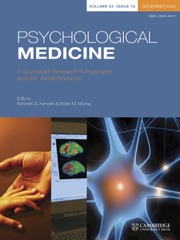
“Background: The causal impacts of recreational cannabis legalization are not well understood due to the number of potential confounds. We sought to quantify possible causal effects of recreational cannabis legalization on substance use, substance use disorder, and psychosocial functioning, and whether vulnerable individuals are more susceptible to the effects of cannabis legalization than others.
Methods: We used a longitudinal, co-twin control design in 4043 twins (N = 240 pairs discordant on residence), first assessed in adolescence and now age 24-49, currently residing in states with different cannabis policies (40% resided in a recreationally legal state). We tested the effect of legalization on outcomes of interest and whether legalization interacts with established vulnerability factors (age, sex, or externalizing psychopathology).
Results: In the co-twin control design accounting for earlier cannabis frequency and alcohol use disorder (AUD) symptoms respectively, the twin living in a recreational state used cannabis on average more often (βw = 0.11, p = 1.3 × 10-3), and had fewer AUD symptoms (βw = -0.11, p = 6.7 × 10-3) than their co-twin living in an non-recreational state. Cannabis legalization was associated with no other adverse outcome in the co-twin design, including cannabis use disorder. No risk factor significantly interacted with legalization status to predict any outcome.
Conclusions: Recreational legalization was associated with increased cannabis use and decreased AUD symptoms but was not associated with other maladaptations. These effects were maintained within twin pairs discordant for residence. Moreover, vulnerabilities to cannabis use were not exacerbated by the legal cannabis environment. Future research may investigate causal links between cannabis consumption and outcomes.”







